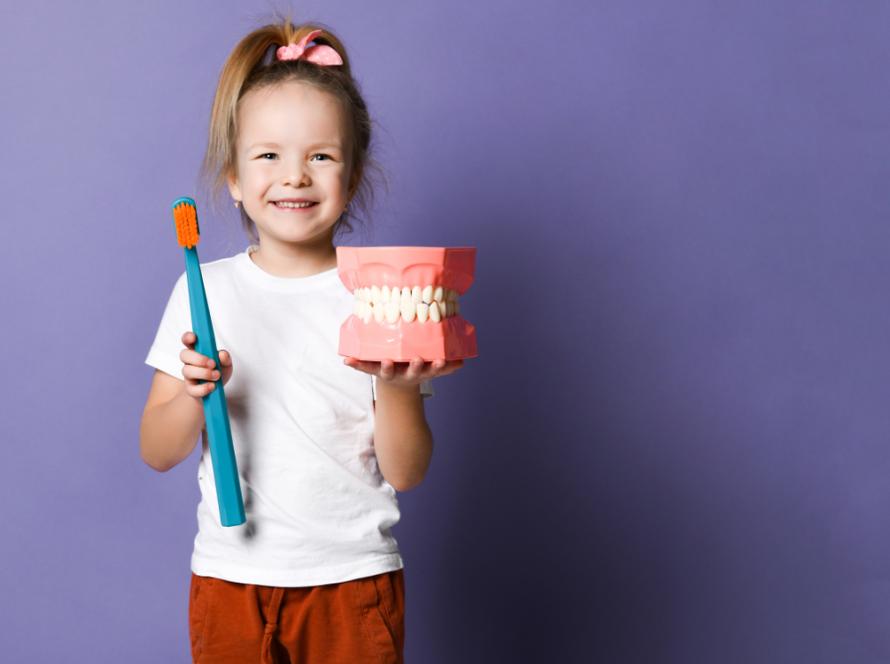As a parent, you probably feel like a pro at spotting your child’s health concerns—whether it’s a runny nose, a scraped knee, or even a wiggly tooth. But what if we told you there’s a world of hidden clues inside your child’s mouth that only a children’s dentist is trained to detect? A routine kids dental checkup is like a mini detective story, uncovering issues you’d never notice at home.
Let’s step into the shoes of a pediatric dentist and discover how they read the silent signals behind every smile.
1. The “Silent Signals” of Early Decay
Sure, you can spot a big brown spot, but did you know that decay often starts invisibly? Dentists are trained to identify demineralization—an early stage of tooth decay that looks like a faint white chalky spot. If not treated, it can develop into a severe cavity.
This is where a dental sealant procedure for kids becomes a superhero move. Dentists can see which molars are most at risk (even if they look fine to you) and recommend sealants before decay takes hold. Think of it as armor applied before the battle starts.
2. Gum Clues: What Pink Tissues Reveal
Healthy gums are commonly pink in color and have a firm texture, but subtle swelling, slight redness, or minor bleeding can reveal much more. Your child might be brushing regularly, but a dentist knows whether their technique is missing certain spots—like way back by the molars—causing early-stage gum inflammation (gingivitis).
During a kids dental checkup, dentists also check for signs of systemic issues. For example, unusual gum patterns can sometimes hint at vitamin deficiencies or even undiagnosed health conditions. That’s detective work you can’t do at home.
3. Bite and Jaw Mysteries: Watching Growth in Motion
Ever wondered why dentists ask your child to bite down, open wide, or wiggle their jaw? It’s not just a ritual—it’s surveillance of how their bite is developing. Misaligned bites, crowding, and subtle shifts in jaw growth can quietly lead to big problems down the road.
Spotting these early allows dentists to recommend interceptive orthodontic care or simple at-home routines to guide jaw development before it turns into a bigger issue. What looks like an adorable smile today might hide future orthodontic concerns—unless you have an expert eye on it.
4. The Breath Test: More Than Just Minty Freshness
Bad breath in kids can sometimes just mean they ate too much garlic bread—but it can also hint at hidden issues like dry mouth, sinus infections, or even undetected cavities. During a checkup, a children’s dentist pays close attention to this, looking for patterns that could point to underlying oral care problems.
They might recommend tweaks to your child’s kids oral care routine, such as using a child-safe mouthwash or upping hydration levels, to keep breath (and oral health) in top shape.
5. The Tongue & Tonsil Check: Hidden Risks
Did you know your child’s tongue, palate, and tonsils also tell stories? A dentist examines these areas for signs of mouth breathing, which can potentially lead to dry mouth and increase cavity risk, or enlarged tonsils that could affect sleep (and, by extension, overall health).
Even tongue posture matters: if your child’s tongue isn’t resting where it should, it can affect speech and jaw development. It’s small details like these that make a dental visit so much more than just “looking at teeth.”
6. Lifestyle Clues: The Detective Beyond the Chair
Pediatric dentists don’t stop at the mouth—they’re also tuned into lifestyle patterns. Do your child’s teeth show signs of nighttime grinding (bruxism)? Are there wear patterns from biting nails, chewing pencils, or using teeth as tools? Your dentist connects these clues to behaviors and offers practical tips to break habits before they cause harm.
They’ll also ask questions about diet and snacking, offering advice on sugar timing and tooth-friendly alternatives. This holistic look at your child’s habits helps fine-tune their kids oral care plan in ways you might not expect.
Why Routine Checkups Matter More Than You Think
It’s easy to think of dental checkups as a box to tick twice a year—but behind every visit is a thorough investigation into your child’s current and future oral health. The smallest clue—a tiny white spot, a subtle gum change, a shift in bite—can make a big difference when caught early.
By scheduling regular kids dental checkups and following through on personalized recommendations (like a dental sealant procedure for kids when needed), you’re giving your child the best shot at a healthy, confident smile for life.
So next time you head to the children’s dentist, remember that there is much more happening than what is immediately apparent. And that’s exactly why expert eyes matter.
Bonus: Parent’s Quick-Check Dental Checklist
While a kids dental checkup is essential for catching the things you can’t see, there are a few signs you can keep an eye on at home between visits. Here’s a simple checklist you can use:
Look for early signs of decay: Faint white or chalky spots may be the earliest signs of trouble.
Check gum health: Are your child’s gums pink and firm—or do you notice redness, puffiness, or bleeding when they brush?
Watch for changes in bite: Do their teeth seem to be shifting? Is their bite uneven, or are they having trouble chewing?
Monitor bad breath: Persistent bad breath, even after brushing, could signal the need for an updated kids oral care routine.
Inspect molars: These back teeth are cavity-prone—ask your dentist whether your child could benefit from a dental sealant procedure for kids to keep them protected.
Note any unusual habits: Thumb-sucking, mouth breathing, grinding, or chewing on objects can all impact dental health.
Q&A: Your Top Kids Dental Checkup Questions Answered
Q: How early should my child have their first dental sealant procedure?
A: Typically, a dental sealant procedure for kids is recommended once their first set of permanent molars appear, usually around age 6. However, your dentist may recommend earlier or later based on your child’s unique cavity risk.
Q: How can I improve my child’s oral care at home?
A: Consistency is key! Encourage twice-daily brushing with fluoride toothpaste, flossing once daily, and regular check-ins with your dentist. Your child’s dentist may personalize their kids oral care routine depending on cavity risk and lifestyle.
Q: How often should my child have a dental checkup?
A: A standard recommendation is every six months, but for kids with higher cavity risk or ongoing treatments, your dentist might suggest more frequent visits.
Spot the unseen, protect the smile—schedule your child’s checkup with Woodlawn Kids Dental!


